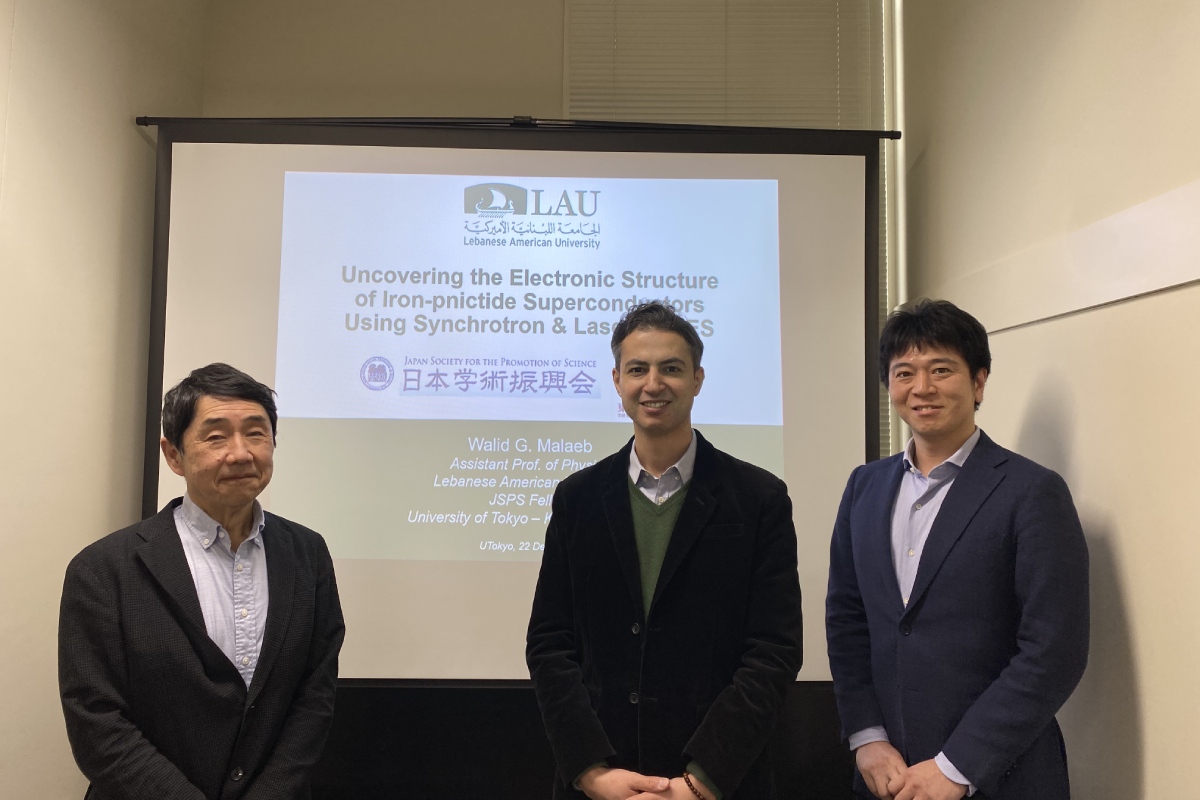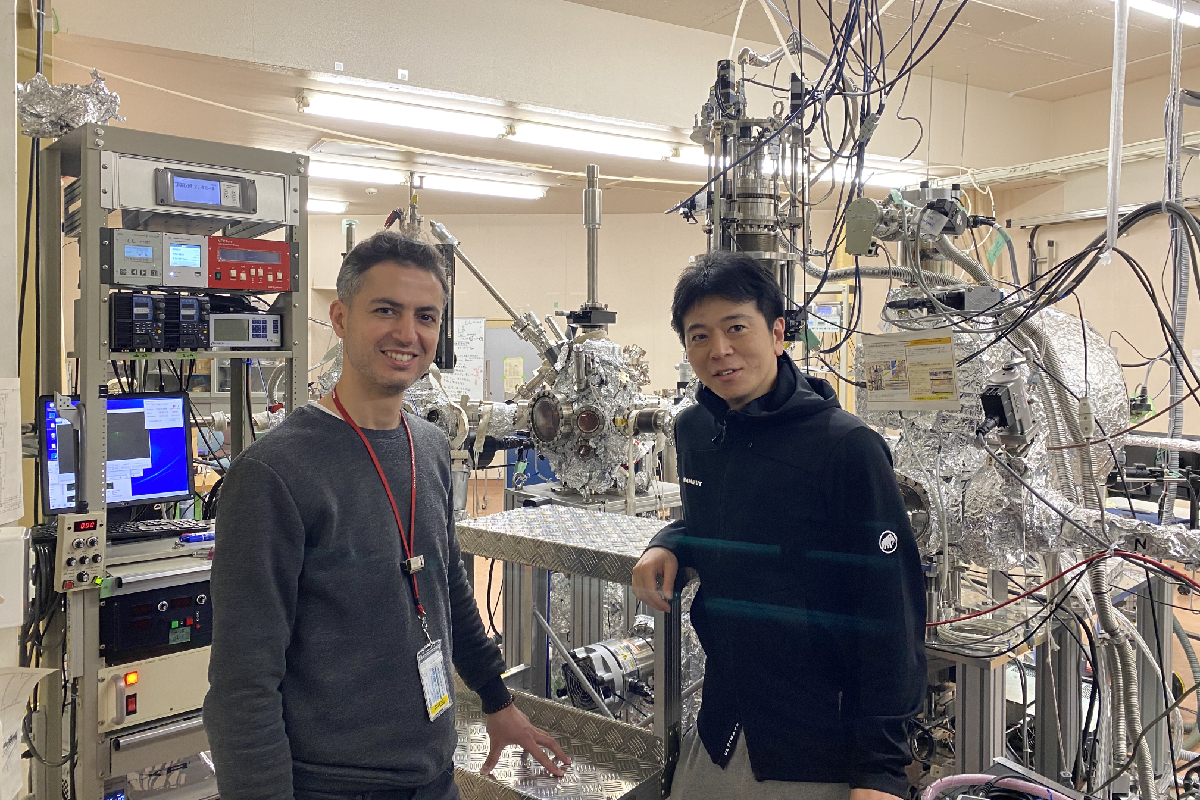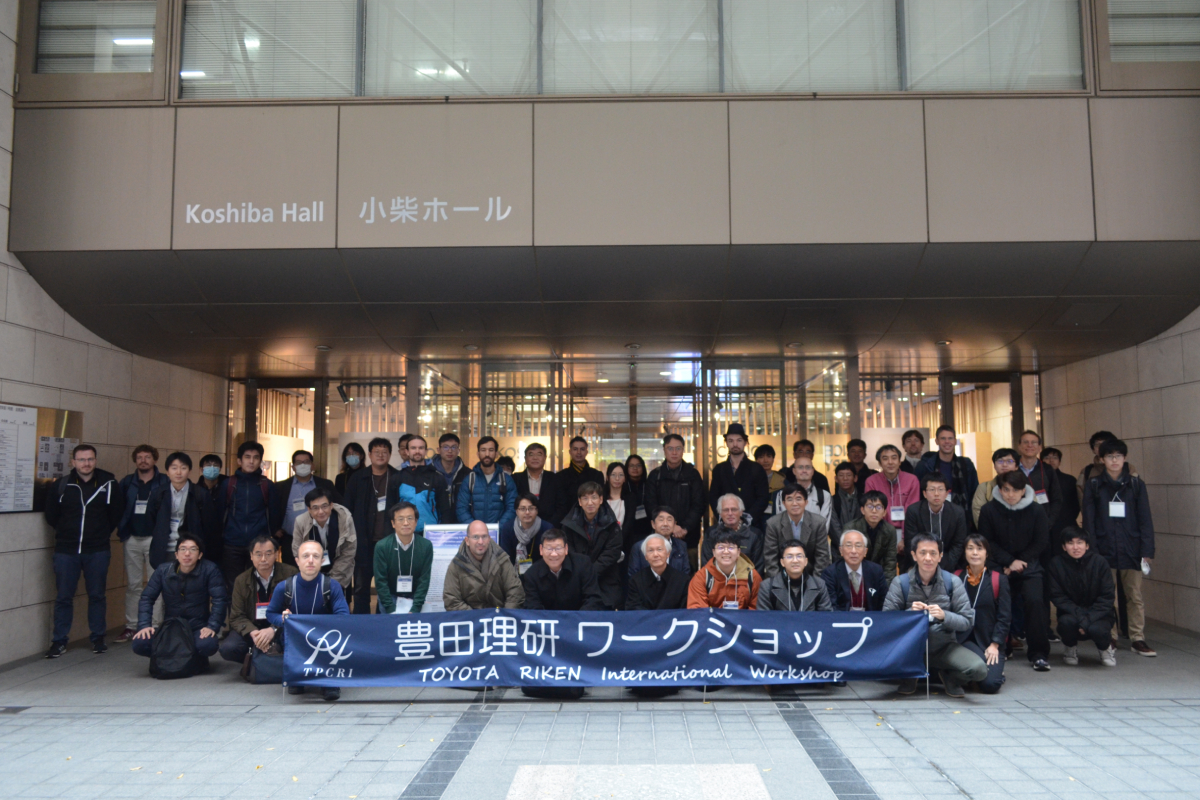Pushing the Limits of Our Understanding
As part of his research activity, Dr. Walid Malaeb presents his latest research on superconductors, the physics behind them and their potential use in advanced technologies in a talk in Japan.
Materials play a crucial role in many modern technologies, and superconductors – novel materials that transmit electricity at sufficiently low temperatures without any energy loss – are no exception.
In association with and with full support for a two-month fellowship by the Japan Society for the Promotion of Science (JSPS), Assistant Professor of Physics at the School of Arts and Sciences Walid Malaeb is at the forefront of research into superconductors, whose properties make them ideal for applications in fields such as computing, energy and medicine.
Having established himself as a leading researcher and a renowned expert in physics with impressive credentials and groundbreaking work, Dr. Malaeb recently presented his research proposal, titled “Observation of the interface states in superconductor/ferromagnet heterostructures by ARPES,” in a talk in Japan.
“We study superconductors for two reasons,” he explained. “The first is to understand the basic physics of the material itself, meaning how they function, the conditions in which they function, and their overall properties. The second, once that step is done, is to develop these materials so we can utilize them in applications.”
The unique properties of superconductors have made them a subject of intensive research and investigation. Having been involved in the research since 2006, Dr. Malaeb’s dedication to advancing one’s understanding of these materials has made his contributions to the field significant in terms of providing invaluable insights into the physics behind them.
“High-temperature superconductors can revolutionize a wide range of technologies, from energy production and storage to transportation, medical imaging and beyond,” he said. “They have come a long way since their discovery in 1911,” he added, “with subsequent breakthroughs leading to the discovery of high-temperature superconductors in 1986.”
“The most recent discovery, made in 2008 in Japan, introduced a new family of superconductors that are cheaper, easier to handle, and have a better potential for applications,” he said. “I was fortunate enough to be doing my PhD in Japan when I connected with the people who had made this latest discovery.”
This landmark, according to Dr. Malaeb, was his first significant step into the field, and it won him a myriad of connections and inventive colleagues, including Professor Yoichi Kamihara, who was one of the incentives behind Dr. Malaeb’s recurrent visits to Japan, as well as Professor Masaki Kobayashi, a prolific researcher in the field at the Center for Spintronics Research Network at The University of Tokyo, who hosted Dr. Malaeb for the research in question.
In his presentation, Dr. Malaeb expounded on his latest research with his team which not only provides a roadmap of how superconductors work but also reveals a strategic study of superconductivity when coupled with a magnetic field.
“For the first time, we used tin rather than any other material, such as iron or copper, over layers of magnets called ferromagnetic materials, to demonstrate the coupling of electrons that usually repel one another.” This discovery, pushed further by Professor Le Duc Anh and his team at The University of Tokyo, allowed him, his host Professor Kobayashi and the team to study such novel materials by photoemission spectroscopy, an advanced technique that uses radiation produced at the synchrotron or local laboratories.
“Extraordinary behavior occurs when you place these very thin layers over ferromagnets,” he added, “and, for a physicist, when this happens, then you’re studying the physics of the universe.”
With the obtained results, Dr. Malaeb is a step closer to helping research develop superconductors that work at room temperature. Now that he and his team are in the process of analyzing the data, they delivered two presentations, providing paramount evidence for researchers on the levels of temperature at which superconductors can function.
The advancements the researchers have made in preparing these materials in various ways have resulted in a deeper understanding of their physics – a difficult task as it required huge machines to accomplish.
The development of this research is crucial as it not only provides a cheaper alternative but also opens new avenues for applications in the near future. “With regard to when we might expect these materials to be applied in our everyday life, I cannot say,” said Dr. Malaeb. “For now, we’re just testing.”
Looking forward, the team will be focusing on further experimentation and basic science, paving the way for the development of better materials and more advanced technologies that could have a significant impact on our lives.
To browse more scholarly output by the LAU community, visit our open-access digital archive, the Lebanese American University Repository (LAUR).


